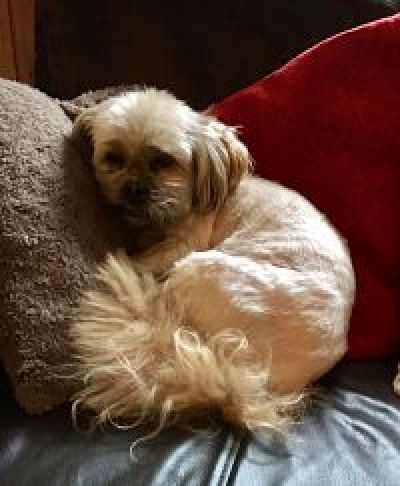
Posted By:
A very common reason for pets being bought into the vets is because their owners find an unexpected lump. This was the case for Sandy, a 9 year old Shih Tsu. Her owner had noticed a number of lumps appear on Sandy’s stomach, around her teats. We were not entirely sure how long they had been there but her owner bought her in as soon as she found them, as she was rightly concerned.
There were 2-3 lumps on each side of her stomach associated with the teats on both sides. They were different sizes and a couple felt quite firm. The types of lumps that Sandy had are called mammary tumours. These are more commonly found in female dogs when they have not been neutered. The risk of the dog developing mammary masses also changes depending on how old the dog is when they are neutered. If they are neutered before the first season then there is only a very small chance of masses developing, approximately 0.5%. After their first season the risk increases to around 8%, and if they are neutered after their second season then this increases to a 26% chance. After their third season neutering no longer reduces the chance of them developing mammary masses compared to unneutered dogs. However it continues to have other benefits.
The next step is to try and determine which types of mass are present. Often we take a type of biopsy called a fine needle aspirate where you put a cell into the mass, take a few cells from it, and send them to a laboratory to analyse. These were taken with Sandy, but as is often the case with mammary masses it did not definitively tell us what type of masses they were. They can be either benign, which means they are unlikely to spread to other areas, or malignant. This means that they can spread to other areas and that they may grow back. As we did not know which type we were dealing with we decided to remove them all as there is a chance they may spread to other areas. As Sandy unfortunately had lumps on both sides it has meant that we needed to operate on both sides. We have to split these into two surgeries performed a number of weeks apart to allow one side to heal before we operate on the other.
We admitted Sandy for the day for her first operation. We anaesthetised her and then x-rayed her chest. We needed to do this as some if the masses are the malignant type then they can spread to other areas, often the lungs, very quickly. If they have already done this then there is no point in putting the dog through surgery as we would not be able to remove all of the cancerous cells. Fortunately for Sandy, the x-rays that we took of her lungs looked normal. We then proceeded to remove all of her teats and glands on one side (the one with more masses). The surgery went well and Sandy spent the next few weeks recovering and allowing her wound to heal.
She came back in again with a fully healed wound a number of weeks later, and at this point we were able to proceed with surgery on the other side. The surgery went well, and although she has now been left with no teats, she also has no lumps either!
We will be keeping a close eye on the area for any of the masses returning but she is doing really well at home now. She’s been a brilliant patient through it all and her owners have been equally as brilliant at caring for her every step of the way.
As our feline friends get older there are a few conditions...
Another winter discussion group season is now behind...
We used a client’s new Morris Remote Control...
©2024 Shepton Veterinary Group Ltd., All rights reserved.
Privacy Policy • Terms & Conditions • Cookie Policy